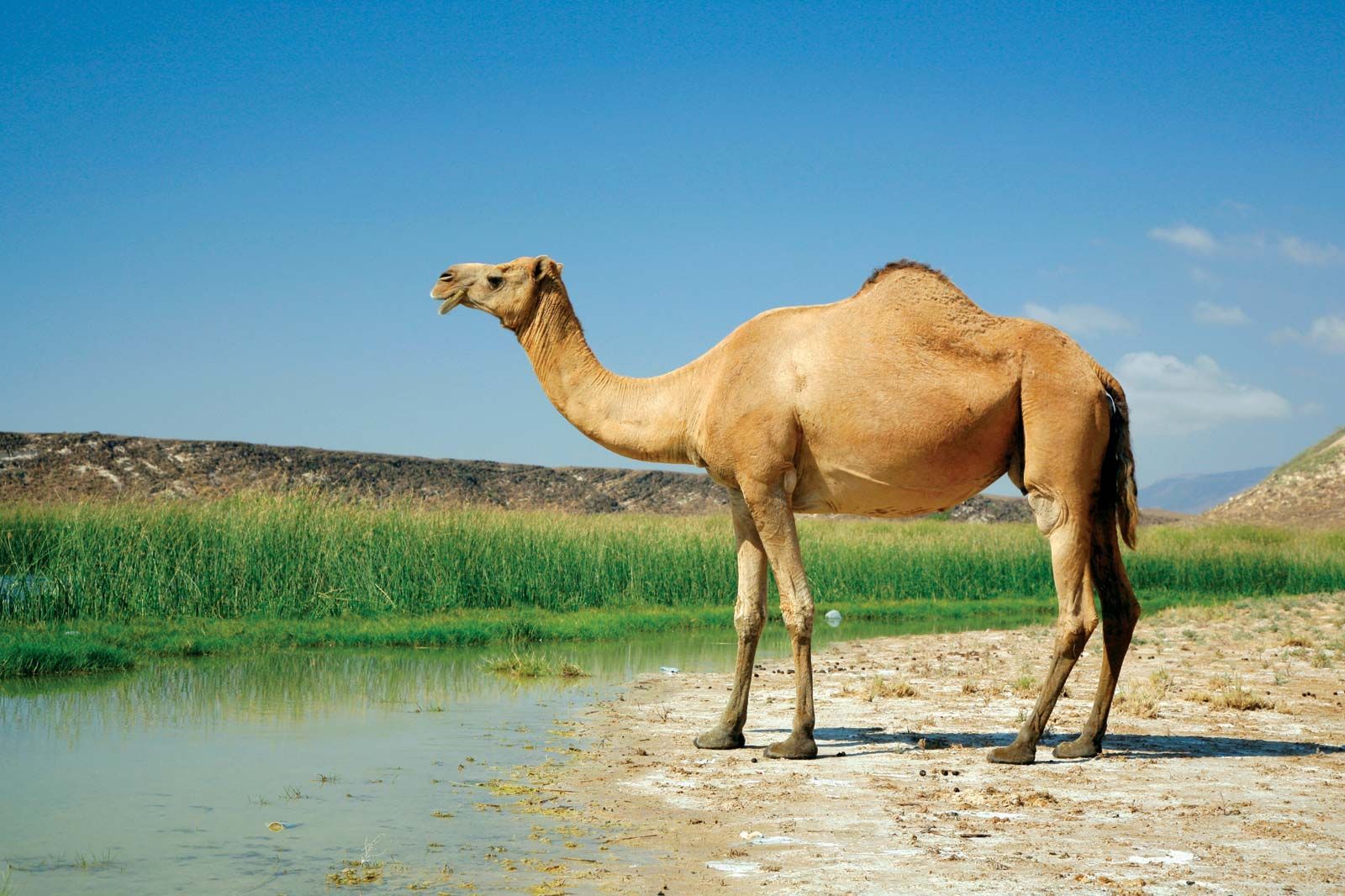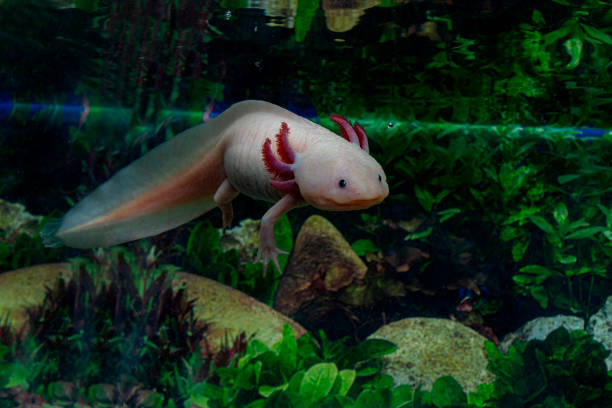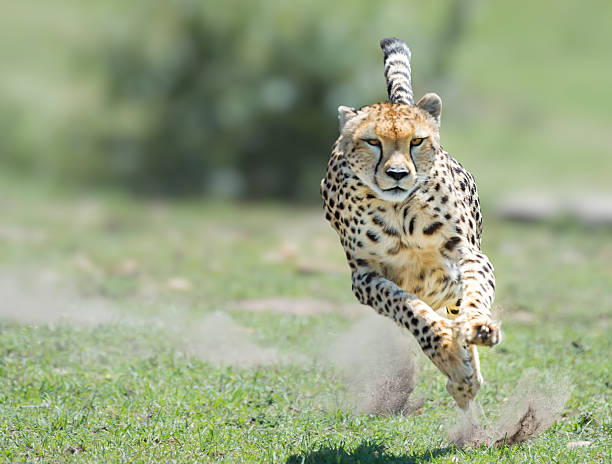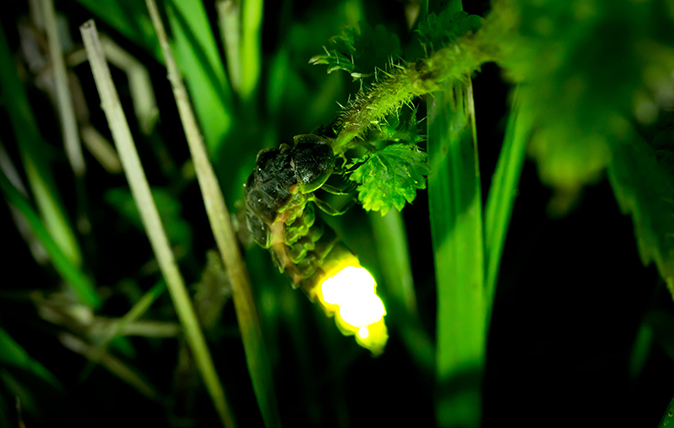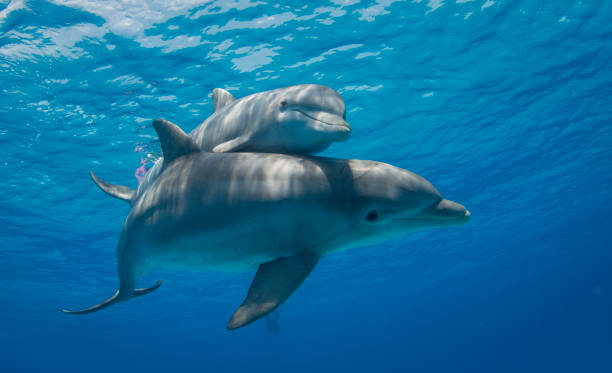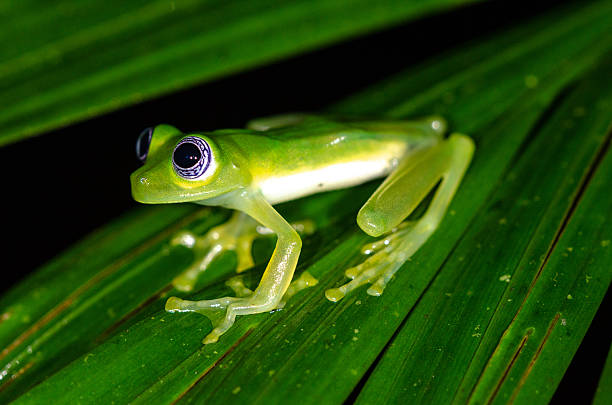The desert is not a place of death—it’s a kingdom of miracles. Beneath the blistering sun, where the ground shimmers like molten glass and the wind carries the taste of salt and dust, life thrives in defiance of the impossible. Here, survival is an art, sculpted by evolution and refined through countless centuries.
While temperatures can soar above 120°F (49°C) by day and plunge below freezing at night, the creatures that inhabit these lands are masters of adaptation. They live in a world of extremes, a world where every drop of water is precious and every shadow is a sanctuary.
From the scorching dunes of the Sahara to the rocky deserts of Arizona, heat-resistant animals have evolved incredible biological mechanisms—water conservation, reflective skin, nocturnal habits, and even the ability to “sleep” through the hottest hours. These aren’t mere survivors; they are champions of endurance, sculpted by sun and sand into symbols of resilience.
Here are twelve extraordinary desert creatures that laugh in the face of heat, each one a living testament to the power of adaptation and the poetry of survival.
1. The Camel – The Timeless Ship of the Desert
When we think of desert survival, the image of a camel inevitably rises, tall and majestic against an ocean of sand. Often called the “ship of the desert,” the camel is not only a symbol of endurance but a masterpiece of biological engineering.
Camels thrive where few others can. Their ability to withstand extreme heat and lack of water borders on the miraculous. Contrary to myth, their humps don’t store water—they store fat, which can be converted into both energy and moisture when food is scarce. A single camel can go for more than a week without water and lose up to 25% of its body weight without ill effects—something fatal to most other mammals.
Their bodies are adapted in every way imaginable: long eyelashes to keep sand out, closable nostrils to block dust storms, and wide, padded feet to walk across burning sand. Their body temperature fluctuates with the day’s heat, reducing the need for sweating and conserving precious moisture.
Even their blood cells are unique—oval-shaped rather than round, allowing them to flow smoothly during dehydration and rehydrate rapidly when water is available.
In the harshest climates, the camel remains not just a survivor, but a symbol of patience, strength, and timeless wisdom—a reminder that endurance, not speed, conquers the desert.
2. The Fennec Fox – The Whisper of the Dunes
Tiny, elegant, and almost otherworldly, the fennec fox is the smallest of all foxes, yet it reigns supreme in the Sahara Desert. Its most striking feature—the oversized ears, sometimes reaching six inches in length—serve not only to amplify the faintest sounds of prey moving under the sand but also to release excess heat.
This elegant adaptation is nature’s own air-conditioning system. Blood vessels in the ears disperse heat, helping the fox stay cool even in searing temperatures.
The fennec fox’s pale fur reflects sunlight by day and retains warmth by night, perfectly tuned to desert extremes. Its thickly furred paws protect it from the scorching sand, and its nocturnal habits allow it to hunt safely in the cooler hours.
Beneath the moonlit dunes, it moves like a ghost—silent, agile, and clever. Feeding on insects, small mammals, and even fruits, it extracts moisture from its food, rarely needing to drink.
The fennec fox is a lesson in delicate balance, proof that survival doesn’t always require brute strength—sometimes, it’s about grace, silence, and listening to the heartbeat of the sand.
3. The Thorny Devil – The Living Water Collector
Across the sunburnt deserts of Australia, the thorny devil lizard stands like a creature from another world. Its spiny armor glows in shades of red and gold, blending with the earth around it, but beneath its fearsome exterior lies one of the most fascinating survival systems in nature.
The thorny devil drinks without drinking. Its skin is covered in a network of microscopic grooves that channel water directly to its mouth—from dew, rain, or even moisture condensed from the air. When a drop touches its body, it’s drawn upward through capillary action until it reaches the lizard’s lips.
In a land where rain may not fall for months, this adaptation is life itself.
Its diet consists almost exclusively of ants—up to 3,000 in a single meal—and its slow, jerky movements make it look like a creature carved from stone. The devil’s camouflage protects it from predators, while its ability to change color helps regulate body temperature, darkening in cool mornings and lightening under intense sun.
The thorny devil is a living testament to ingenuity—proof that evolution never wastes a single drop of potential.
4. The Gila Monster – The Sun’s Venomous Shadow
Beneath the blazing skies of the Sonoran Desert, the Gila monster slithers slowly, its bead-like scales glistening like jewels of molten amber and obsidian. One of the world’s few venomous lizards, it carries both danger and mystery in every movement.
The Gila monster spends up to 90% of its life underground, avoiding the cruelest heat of the day. When it emerges, usually after rain, it feeds on bird eggs, small mammals, and other reptiles. Its metabolism is astonishingly slow—it can survive months between meals by storing fat in its tail.
Its venom, delivered through grooved teeth, isn’t used to subdue prey as much as it is a defense. Ironically, this venom has become a gift to humanity; a compound derived from it, exendin-4, inspired the creation of diabetes medications that help regulate insulin.
The Gila monster embodies the paradox of the desert—lethal and life-giving, ancient yet modern, a creature whose survival has enriched our own.
5. The Roadrunner – The Speed Demon of the Sands
The roadrunner isn’t just a cartoon icon—it’s a real-life marvel of desert agility and intelligence. Found in the arid American Southwest, this bird can sprint at speeds over 20 miles per hour, darting between cactus shadows in pursuit of prey.
Unlike most birds, the roadrunner is both a predator and a strategist. It feeds on insects, snakes, and even small lizards—sometimes working in pairs to outmaneuver venomous rattlesnakes.
Its long legs and aerodynamic body minimize contact with hot surfaces, while special nasal glands excrete excess salt, conserving water. Roadrunners seldom need to drink; they draw moisture from their prey.
When the sun is merciless, they reduce their activity, seeking shade until the evening brings relief. Their ability to adjust metabolism and body temperature makes them one of the desert’s most heat-efficient creatures.
Every step of the roadrunner tells a story of motion—life in constant chase, always a heartbeat ahead of the sun.
6. The Addax Antelope – The Ghost of the Sahara
If the fennec fox is the whisper of the desert, the addax antelope is its ghost—pale, elusive, and hauntingly beautiful. Once roaming in great herds across the Sahara, this critically endangered species has evolved a perfect harmony with the heat.
Its coat changes with the seasons—white in summer to reflect sunlight, sandy brown in winter to absorb warmth. It can survive without drinking water for months, obtaining moisture entirely from the plants it eats.
The addax’s hooves are wide and splayed to walk effortlessly on soft dunes, and it travels mainly at night to avoid the scorching daylight.
Its body temperature rises and falls with the environment, reducing the need for sweating—a remarkable internal adaptation that minimizes water loss.
To encounter an addax is to witness serenity in motion, a spirit of endurance that carries the desert’s silence in its every step.
7. The Desert Tortoise – The Patient Philosopher
Deep beneath the Mojave and Sonoran deserts, in burrows cool and shaded, lives a creature that has mastered the art of waiting. The desert tortoise, with its dome-shaped shell and slow, deliberate pace, may seem unremarkable at first glance—but it is a creature of profound wisdom.
During the hottest months, the tortoise retreats underground, entering a state called estivation—a kind of summer hibernation—to survive the deadly heat. Its thick shell insulates it from temperature extremes, while its ability to store water in its bladder allows it to endure long dry periods.
When rain finally comes, the tortoise drinks deeply and refills its internal reservoir, which can sustain it for nearly a year.
Its slow metabolism and unhurried life are not weaknesses—they are strategies refined by evolution. The tortoise survives by mastering stillness, by listening to the rhythms of the desert and moving only when the world is ready.
In its calm persistence, the desert tortoise embodies the quiet strength of patience itself.
8. The Kangaroo Rat – The Alchemist of Moisture
In the moonlit stillness of the American desert, a tiny creature hops across the sand—light as air, silent as thought. The kangaroo rat, no bigger than a child’s hand, performs one of nature’s greatest miracles: it lives its entire life without ever drinking water.
How? Through chemistry.
Its kidneys are among the most efficient in the animal kingdom, concentrating waste so precisely that not a drop is lost. It extracts water entirely from the seeds it eats, and even its metabolism creates moisture—a byproduct of digesting carbohydrates.
Its burrow remains cool and humid, helping retain body moisture. When threatened, it leaps several feet into the air, kicking up sand to confuse predators.
The kangaroo rat’s survival is an equation of elegance and efficiency—a dance between biology and environment that transforms scarcity into abundance.
9. The Oryx – The Desert’s Warrior Spirit
Majestic and unyielding, the oryx stands as a symbol of courage and resilience in Africa’s sun-scorched lands. With its long, spear-like horns and white coat, it seems almost mythical—an animal forged from heat and endurance.
The oryx’s body is a masterpiece of thermal control. It can raise its internal temperature to 116°F (47°C) without harm, preventing sweating and conserving water. Its light-colored coat reflects sunlight, while its nasal passages cool incoming air, protecting its brain from overheating.
When water is scarce, the oryx relies on moisture-rich plants and can survive weeks without a single drink. During droughts, it digs for roots and bulbs hidden beneath the sand—its instincts honed by generations of survival.
In the emptiest deserts, where even the wind seems to sleep, the oryx walks with regal calm. It doesn’t defy the sun—it endures it with quiet dignity.
10. The Deathstalker Scorpion – The Shadow of the Heat
Among the most feared creatures of the desert, the deathstalker scorpion is a paradox of beauty and danger. Its translucent yellow body glows under ultraviolet light, a ghostly warning in the night.
This scorpion survives in temperatures exceeding 120°F, hiding beneath rocks or burrowing into the sand by day. Its metabolism is extraordinarily efficient; it can survive on a single insect for months, conserving both energy and water.
Though its venom is potent, it’s also a source of hope—scientists have discovered compounds in it that may help fight cancer and brain tumors.
The deathstalker’s existence is a reminder that even the deadliest creatures have their place in nature’s design. It lives not for destruction, but as part of the desert’s eternal balance between light and shadow, life and death.
11. The Sand Cat – The Phantom Hunter
With its wide-set eyes and soft, sandy fur, the sand cat is the desert’s hidden predator—a feline ghost perfectly designed for survival.
It inhabits some of the harshest deserts on Earth, from the Sahara to Central Asia, where temperatures swing from searing heat to icy cold. Its thick fur insulates against both extremes, and its furry footpads protect it from hot sand while muffling its steps.
Sand cats are nocturnal, emerging under the stars to hunt rodents, reptiles, and insects. They can survive entirely without drinking water, obtaining all necessary moisture from prey.
Their dens, dug deep into the sand, maintain cool, stable temperatures even when the surface burns. In the moonlight, their glowing eyes and silent grace give them an almost mystical aura—nature’s whisper of stealth and precision.
The sand cat embodies the soul of the desert: unseen, unbroken, and utterly beautiful in its solitude.
12. The Sidewinder Rattlesnake – The Dancer of the Dunes
If the desert had music, the sidewinder rattlesnake would dance to its rhythm. Found in the sandy regions of the southwestern United States, this snake has perfected a movement unlike any other—sidewinding, a graceful motion that allows it to glide over hot sand with minimal contact.
This unique locomotion not only conserves energy but prevents overheating. By lifting most of its body off the ground, it reduces exposure to scorching surfaces that can exceed 150°F.
Its pale, sandy color blends seamlessly with its surroundings, both for camouflage and heat reflection. When the sun blazes, it burrows into the sand or curls beneath rocks, emerging at night to hunt small mammals and lizards.
The sidewinder’s eyes, set high on its head, can detect infrared radiation, allowing it to “see” the body heat of prey in total darkness.
To watch a sidewinder move is to witness desert poetry—a hypnotic blend of physics and grace, where every motion speaks of adaptation, mastery, and quiet defiance.
The Science of Heat Resistance
All these creatures share a profound truth: survival in the desert is not about strength but efficiency. Life here is a study in precision—every heartbeat, every breath, every drop of moisture counts.
Desert animals have evolved remarkable physiological traits to endure heat: concentrated urine, reflective coats, nocturnal behavior, and the ability to tolerate dehydration that would kill most species. Their metabolic rates adjust to conserve energy, and their anatomy—long limbs, specialized lungs, unique kidneys—reflects millions of years of adaptation.
They don’t resist the desert; they harmonize with it.
The Eternal Lesson of the Desert
The desert is a world of paradoxes—a place of death that overflows with life, a land of silence that hums with unseen energy. Its creatures teach us lessons not just about biology, but about existence itself.
They show that survival is an art, not a struggle. That stillness can be strength. That the fiercest environments often create the most extraordinary beings.
To walk through the desert is to walk among miracles shaped by sunlight and stone—creatures that carry within them the wisdom of endurance, the beauty of adaptation, and the quiet courage to live where life should not be possible.
In every dune, every track, every heartbeat beneath the blazing sky, the desert whispers its eternal truth: survival is not defiance—it is harmony with the fire of the world.
